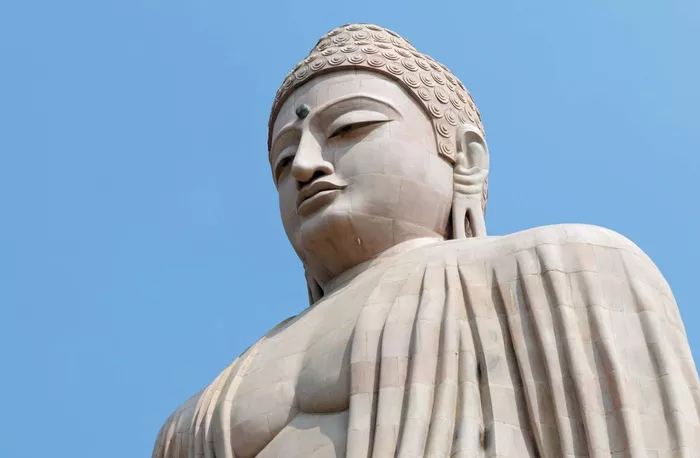In Buddhism, the placement of Buddha statues plays a significant role in creating a peaceful and harmonious environment. A well-placed Buddha statue can symbolize enlightenment, peace, and wisdom. However, there are traditional guidelines that suggest the best ways to position these sacred figures to enhance spiritual practice and foster a tranquil atmosphere. This article will explore the important factors to consider when placing Buddha statues, the different types of Buddha statues, and their meaning in Buddhist tradition.
The Importance of Proper Placement
Proper placement of Buddha statues is essential in maintaining balance and creating an environment that encourages spiritual growth. The Buddha statues serve not only as decorative objects but also as symbols of enlightenment, compassion, and wisdom. By placing them correctly, one can ensure that they serve their purpose in the Buddhist practice.
Symbolic Meaning of Buddha Statues
The Buddha statue is a symbol of the enlightened mind. Each statue is designed to represent the physical form of Siddhartha Gautama, the historical Buddha. Depending on the type of statue, there are different meanings associated with the position and gesture of the figure. Understanding Buddha statues can help you choose the right one for your space and practice.
The Role of Direction and Placement
In Buddhist tradition, the placement of Buddha statues is often guided by the cardinal directions. Each direction is believed to have specific spiritual significance. For example:
- North: Associated with wisdom and meditation.
- South: Symbolizes peace and serenity.
- East: Represents the teachings of Buddha and the spread of Dharma.
- West: Linked with compassion and kindness.
These directions can influence the energy in the room, so it’s important to place your Buddha statue facing the appropriate direction according to the desired qualities you wish to cultivate.
Different Types of Buddha Statues and Their Meaning
Buddha statues come in various styles and forms, each representing a different aspect of Buddha’s teachings. Understanding these types can help you select the one that best suits your spiritual needs.
Seated Buddha Statues
Seated Buddha statues are one of the most common and revered forms. They often depict Buddha in a meditative posture, symbolizing the attainment of enlightenment through meditation. The crossed-legged posture represents a state of calm, focus, and mindfulness. Placing a seated Buddha statue in a quiet corner or meditation room can help create an ideal environment for contemplation.
Standing Buddha Statues
Standing Buddha statues are another popular form. These statues typically depict Buddha in a posture of blessing or teaching. The raised hand in a standing Buddha statue symbolizes protection, guidance, and wisdom. It’s often placed in the home or garden, symbolizing the Buddha’s role as a spiritual guide.
Reclining Buddha Statues
The reclining Buddha represents the moment of Buddha’s passing into Nirvana. This statue symbolizes the impermanence of life and the achievement of ultimate peace. A reclining Buddha statue can be placed in areas where you seek to reflect on life’s impermanence and find inner peace.
Key Guidelines for Placing Buddha Statues
When placing Buddha statues, there are several guidelines that can help ensure they are positioned correctly for spiritual purposes.
Avoid Placing Buddha Statues in Bedrooms
While Buddha statues are symbols of peace and serenity, it is generally advised not to place them in the bedroom. This is because the bedroom is a private and intimate space, and it is important to maintain a sense of respect for the sacredness of the Buddha’s image. A bedroom is associated with rest and sleep, and placing a Buddha statue here might be seen as disrespectful in some traditions.
Do Not Place Buddha Statues on the Floor
Buddha statues should never be placed on the floor. This is because the floor is seen as a lower, impure place. The Buddha, as a symbol of enlightenment, should be placed on a higher level, such as a pedestal or altar. This elevates the statue and shows respect to the Buddha’s image.
Keep the Buddha Statue Clean and Uncluttered
It is important to keep the area around the Buddha statue clean and uncluttered. A clean environment reflects purity of mind, which is central to Buddhist teachings. You can place flowers, incense, or candles around the statue as offerings, but be sure to avoid placing items that could be seen as disrespectful, such as food or items associated with worldly distractions.
Placing Buddha Statues in a Meditation Area
If possible, place Buddha statues in a quiet and calm space dedicated to meditation or spiritual practice. This creates an environment conducive to mindfulness and reflection. The statue should be placed where it can be easily seen during meditation, helping to focus the mind and foster a sense of spiritual connection.
Where to Buy Buddha Statues
If you are interested in acquiring a Buddha statue for your home, it’s important to choose a statue that resonates with you spiritually. You can explore a variety of buddha statues types online to find one that reflects your personal practice. Whether you prefer a seated, standing, or reclining Buddha, there are many options available to fit your space and spiritual goals.
Conclusion
The proper placement of Buddha statues can enhance your practice and help create an environment that encourages peace, reflection, and mindfulness. By following traditional guidelines and understanding the symbolism behind the different types of statues, you can ensure that your Buddha statues serve as a constant reminder of the Buddha’s teachings. Whether you are placing them in a meditation space, living room, or garden, these sacred images will bring a sense of calm and spiritual energy into your surroundings.

